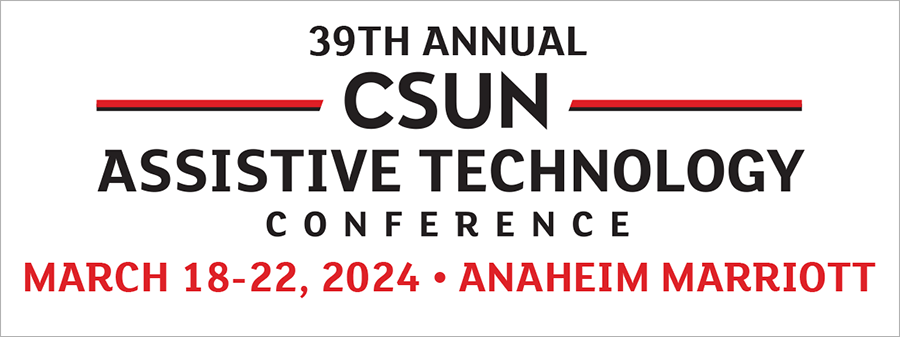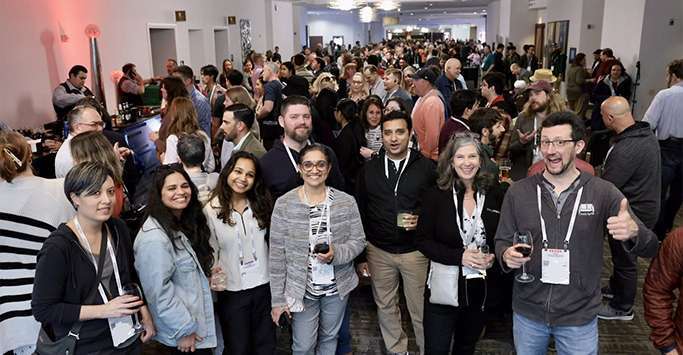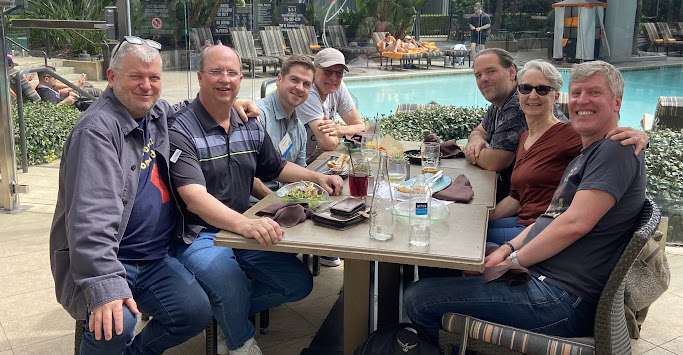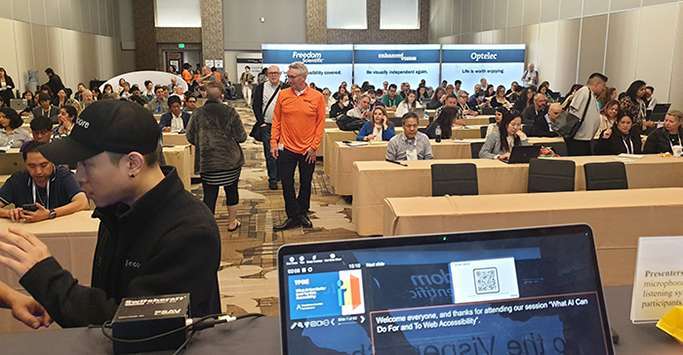
A couple of weeks ago, I attended my first CSUN – the California State University Northridge Assistive Technology Conference, generally acknowledged to be THE major live conference in the world focusing on disability and accessibility.
It certainly lived up to its reputation, with 600 presenters giving 470 talks in 26 time slots over four days – not counting side events and workshops.
The US company I work for, TPGi, is a major sponsor of the event and had a room just for its presenters, which included me! My Knowledge Center director Hans Hillen and I had a talk accepted on What AI can and do for (and to) web accessibility, and we were scheduled to present it at 3.20pm on Tuesday 19 March.
First, of course, I had to get there. I ended up in a 14 hour flight to Vancouver, then a 3 hour flight to San Diego, and a two and half hour bus trip from San Diego to Anaheim, the site of the conference (right next door to Disneyland).
I’ve made a similar trip previously to attend Web Directions North in Vancouver in 2008, and it wasn’t too bad: I didn’t sleep and watched five first release movies in a row.
We stayed at the conference venue, the Marriott hotel, and that was ideal: I had a great room and the event organisation was superb.

I attended a pre-conference full-day workshop on Using Generative AI as Your Accessibility Testing Assistant, which was excellent. The morning was spent familiarising ourselves with techniques for using ChatGPT and creating bookmarklets. The afternoon was then turned over to participants working solo or in teams to craft JavaScript bookmarklets based on ChatGPT prompts to create our own accessibility testing tools.
I directed my efforts to the language of web content and ended up with a very handy tool to assess a web page and advise which text content should have a <lang> attribute applied so that screen readers would announce it correctly. Amazing!
Possibly the quirkiest aspect of the conference was that I met so many of my work colleagues face-to-face for the first time – 36 of them, in fact! I’d previously only met two of my co-workers in person. Many of them, and more I didn’t get the chance to meet, were also there to present, so my schedule leaned towards supporting my colleagues.
Fortunately, those talks were terrific, covering topics like single page applications, what’s new in JAWS and related apps, data vizualisation, cybersecurity, women in tech, user consent, mobile apps, user interface markup, and client case studies, all through the lens of accessibility.
I also attended a few other talks, including one on checklists by Zoë Haughton and May-Fei Lee from Intopia, who’d also made the trek from Australia, a mobile app case study by Rachele DiTullio (a former TPGi colleague), and more on data vizualisation from the team at Highcharts.
Every single talk was fascinating, informative and often challenging.
Just as engaging were the out-of-session conversations I had, both with people I knew and many whose work I knew but I met for the first time. I had great chats with Steve Faulkner, Derek Featherstone, Doug Schepers, Matt May, Jennison Asuncion, Mike Paciello, Adrian Roselli, Sarah Horton, as well as Ross Mullen from CANAXESS, and the other Intopians at CSUN, Andrew Arch and Stewart Hay (weird how I have to travel halfway round the world to catch up with Aussies).
And there were lots of brief hellos and catchups with people like Lainey Feingold, Susanna Laurin, Dylan Barrell from Deque, Rob Carr from WebAIM, and heaps of others. Apart from the sharing of technical expertise, CSUN truly is a who’s who of digital accessibility.

I talked up OZeWAI wherever I could, and people were genuinely interested in how a peak industry body for accessibility works. There really aren’t many nationally focused organisations like OZeWAI around.
And what of our own presentation? Well, we were aware that there were about 20 other talks focused on AI and accessibility, and that there were 14 other talks on in the same timeslot as ours, so we were amazed to see the room fill up to standing room only, over 120 people.
The talk went extremely well, with me talking about how we’re already using AI in alt text generation, automatic captioning and AI-powered overlays (what you might call the good, the bad and the ugly), and Hans focusing on future uses such as personal aids, computer vision, customising content, and coding assistance.
Everyone seemed very engaged, the jokes worked (phew!), and we had some great questions. Afterwards, lots of people complimented us, including senior TPGi management, who suddenly seemed to see us as key players in the company’s future plans.

There were more great conversations over lunches, dinners, and drinks, and the whole event was a truly immersive exercise in what’s happening in digital accessibility, which is a LOT.
As a bonus, I even had a little side trip to Disneyland with a non-TPGi accessibility colleague who happens to live in Anaheim. On the other hand, because of that I missed Stevie Wonder’s appearance at the TPGi reception.
All in all, it was an amazing week, and an experience I highly recommend to anyone who can afford it (or can talk their boss into affording it). I came out of it totally energised and further committed to achieving that aim we all share of making this world digitally accessible.
PS If you’re interested, I expanded the transcript of my part of our talk and published it as a blog post on this site.
